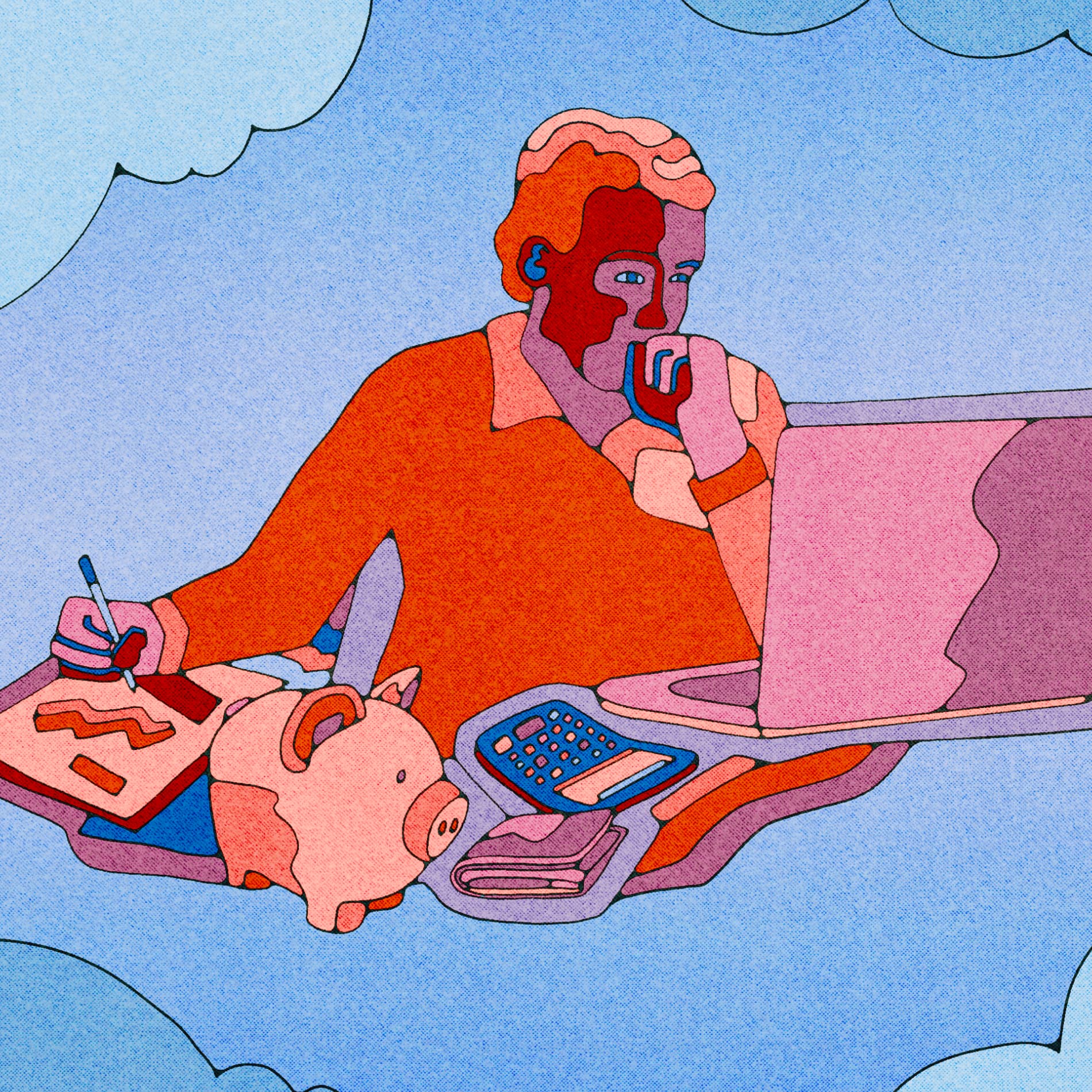Finance for Humans
Our Four Step Plan to Investing in a Crappy Market
And oh, it’s been crappy. It's easy to feel like an investing genius when the markets are going up. But how do you stay smart when markets are... not up?
Wealthsimple makes powerful financial tools to help you grow and manage your money. Learn more
It’s been easy to forget over the last decade that markets don’t always, you know, go up. 2022 has been a reminder of that fact. It’s been brutal. The S&P 500 is down about 14.5% YTD — its worst start to a year since 1970. Bonds, which could historically be counted on to be stable in times of turmoil, have fared just about as poorly. And the losses have not been spread out equally. Some of the assets that have been hammered the worst are the very same assets that have outperformed for a long time: namely high growth tech stocks. (One silver lining: Canadian stocks are actually doing the best out of major equity indices – they’re only down 2% this year so far.)
The downturn owes not to one factor but to a bunch: the war in Ukraine, supply-chain-snarling lockdowns in China, bearish sentiment. The list goes on. At the top, though, is a word you’ve probably heard a lot: inflation. And the interest rates central bankers have been hiking (and are anticipated to keep hiking) to bring down decades-high inflation. Let’s stop for a second to explain the mechanism at work here. When interest rates go up, you have to pay more to borrow money that you then spend. And, when people spend less, the economy slows down. Meanwhile, since interest rates are higher, keeping your cash in a savings account starts to look like a pretty good idea. The danger with all this is that if central banks hike interest rates too much, they can slow the economy so much they trigger a recession. Which obviously wouldn’t be good, and which is a big concern for investors right now.

Sign up for our weekly non-boring newsletter about money, markets, and more.
By providing your email, you are consenting to receive communications from Wealthsimple Media Inc. Visit our Privacy Policy for more info, or contact us at privacy@wealthsimple.com or 80 Spadina Ave., Toronto, ON.
We’re going to get to our four-point plan in a minute. But first, there’s one important idea everyone needs to remember: the government does not want us sitting on our money. If enough people don’t borrow, and spend, and invest, the economy doesn’t work, and that’s bad for everyone (especially politicians). Historically, investing returns haven’t stayed below the returns from holding cash forever.
That’s not to say this situation will resolve itself quickly. We might be dealing with uncertainty for a while.
But, before you panic and sell your stocks and move everything to cash, or into crypto, or into a box under your mattress, take a deep breath.
Recommended for you

Nervous About Overheated Stocks? Let’s Revisit Four of Our Best-Ever Insights
Finance for Humans

A Freelancer’s Guide to Saving Like a Corporate Lifer
Finance for Humans

Five Tax Enigmas That Confuse Basically Everyone
Finance for Humans

Ask Lizzie: Is it OK if I Use Shopping to Make Me Feel, You Know, Happier?
Finance for Humans
Before you freak, make sure you know what your goals are
Hopefully, you invested with long-term goals in mind. And, if you did, you should think carefully before you yank your money out of the market based on what’s happening in the short-term. Investing decisions should really boil down to three things: your personal timeline, your financial goals, and your risk tolerance. Long-term investors (like those socking away money to retire more than a decade from now) should expect short-term losses sometimes, because markets go through cycles. There are periods of gains and periods of losses, but, historically, risky assets like stocks tend to do well over the long-term – investors are usually rewarded for continuing investing and toughing out a downturn. That’s not a new idea, but one worth remembering when you’re experiencing some short-term pain. Still, caution is still warranted, which brings us to our next point…
Don’t make panic-based decisions
Yeah, we know: easier said than done, right? There’s tons of data on this: people who try to time the market often screw it up. The time to change your risk level in response to market movements is if the movements have changed your chances to meet your goals. Long-term investors should generally respond to changes in the market by… not really doing anything. Keep saving and investing. It’s kind of like a post-breakup haircut. Yes, you can grow those bangs out again, or increase your earnings, but the whole situation would probably be better if you’d taken 24 hours to think that move through.
Diversify, diversify, diversify
Diversification works. Make sure that you’re putting your money into a mix of different types of investments (some that are more sensitive to inflation, for instance, and some that are less). Diversification does come with trade-offs – you might underperform when an index is outperforming – but it makes sense in the long run. Diversification means making sure that you don’t have too much money in a single geographical region, industry, asset class, or type of stock so you’re not vulnerable to sector- and country-specific downturns – and so the risk level matches your goals. It’s pretty impossible to pick the best-performing asset class year over year. The TSX trailed world stocks by about 10% in 2020, but significantly outperformed them last year and this year to date.
Remember, downturns don’t last forever
Finally, our opinion is that this too shall pass. Positive returns have followed interest rate increases more often than not. Sometimes, that happens immediately, or over a couple of years, but the fact that rates are rising doesn’t mean returns are necessarily going to be low in the future.
Wealthsimple's education team is made up of writers and financial experts dedicated to making the world of finance easy to understand and not-at-all boring to read.
The content on this site is produced by Wealthsimple Media Inc. and is for informational purposes only. The content is not intended to be investment advice or any other kind of professional advice. Before taking any action based on this content you should consult a professional. We do not endorse any third parties referenced on this site. When you invest, your money is at risk and it is possible that you may lose some or all of your investment. Past performance is not a guarantee of future results. Historical returns, hypothetical returns, expected returns and images included in this content are for illustrative purposes only.






